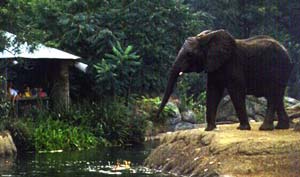Parchyderms
Pachyderms:
Designing to meet the needs and provide beneficial behavioral choices for pachyderms such as elephants, rhinos, hippos, and tapirs is a major challenge. They are intelligent, big, strong, destructive, potentially dangerous, and many are intensely social. Elephants, Indian one-horned rhinos, and tapirs love water and hippos of course require substantial volumes, which must be treated at considerable on-going expense. Maintaining vegetation within their reach is nearly impossible except in very large areas, and the trend is certainly to provide much more space for these amazing creatures. Boras Djurpark in Sweden and Dallas Zoo in the USA have displays in which elephants have both their own areas and areas they share with hoofed species such as giraffe and zebra. Elephants belong in herds and many zoos without space for multigenerational groups have moved their elephant to large open range facilities. Hippos are traditionally kept in pairs, which is wrong. These, and to some extent white rhinos, should only be managed in larger social groups in much larger areas.
Elephant management and exhibitry is in a “golden age” of innovation and practice, with positive reinforcement training and “protected contact” management spreading from North America and Europe into progressive Asian countries such as Singapore. Facility design for other pachyderm species needs to make similar progress.
Pachyderm Papers
Werribee Open Range Zoo, “Asian Elephant Facilities and Management Study“, Werribee, Victoria, Australia.
Good Project Examples
- African Savanna, Pittsburgh Zoo * (elephant, rhinoceros) J&J

Public Elephant Viewing
Pittsburgh Zoo elephant exhibit. Photos: M. Nichols
- African Elephant Exhibit, Pittsburgh Zoo, Pittsburg Pennsylvania, USA J&J
- Hippoquarium, Toledo Zoo J&J
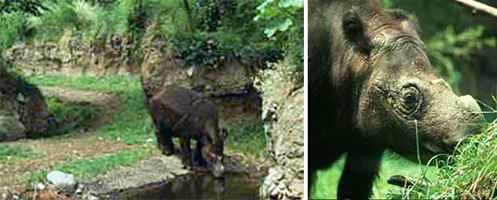
Elephant House Renovation
Jon’s Naturalistic Sumatran rhino display for the Bronx Zoo. This rare animal was later returned to a Sumatran breeding sanctuary where she successful reared offspring.
Renowned Zoo Director William Conway challenged Jon Coe and Gary Lee (later founding principals of CLRdesign, inc.) to design free-form, highly naturalistic displays for elephant, Malayan tapir and Sumatran rhinoceros within the formal beaux arts architectural precinct of the Astor Court. Jon answered by evoking the romantic landscape painting tradition of Claude Loraine to set up asymmetrical, “romantic” and “picturesque” elements in Arcadian settings of wildlife. Today, 20 years later, with mature plantings, the exhibits remain among the most beautiful displays of their type ever attempted.
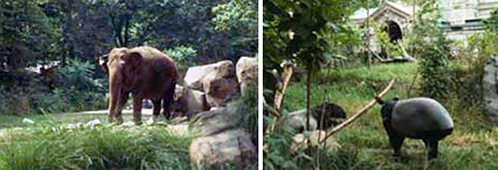
The naturalistic Asian elephant and Malayan tapir displays for the Bronx Zoo.
Jon Coe and Gary Lee were consultants to New York architects Goldstone & Hinz. John Gwynne lead the Zoo’s excellent design staff which oversaw design and construction.
- Elephant Exhibit, Bronx Zoo (elephant, Sumatran rhino, tapir) 1990 CLR
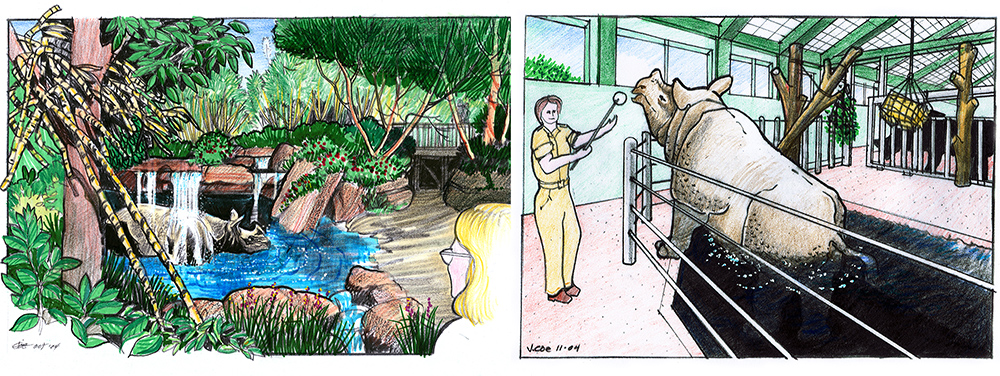
Studies for Rhino Exhibit
Studies for Woodland Park Zoo Indian One-Horned Rhino Exhibit:This concept was intended to allow Indian one-horned rhinos to time-share with existing elephants on an under-utilized area of the existing Asian elephant exhibit. However, the elephants were later moved to a large sanctuary and the elephant facility adapted for these rhinos. Jon’s and CLR’s concepts were never implemented.
- Greater One Horned Rhino, Woodland Park Zoo, Seattle, Washington USA 1990 CLR
- Asian Forest Concept, Denver Zoo (elephant, rhinoceros, tapir) CLR
- Hippoquarium, Toledo Zoo J&J
- Elephant Exhibit, Riverbanks Zoo, New York, CLR
Elephant Exhibit, Taronga Zoo
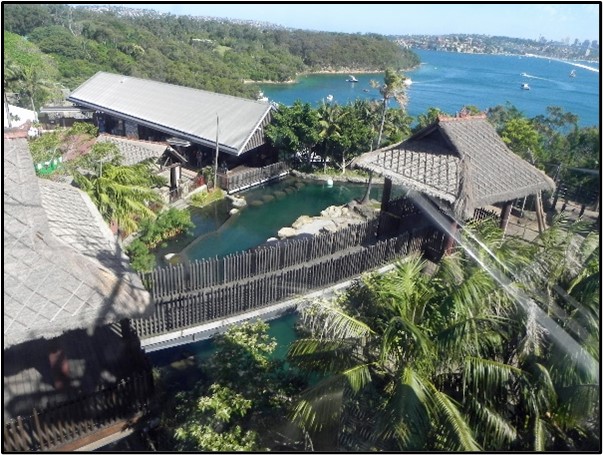
View of the elephant facility at Taronga Zoo seen from their cable car public transport system.
There was not enough area on this steep site to provide a large exhibit for elephants. Jon (then with CLR) worked with Hassell Design Studio to create a 60m long, 3m deep “river meander” to encourage low impact aquatic-aerobic exercise to improve physical health for these elephants, to compensate for providing less space. Jon likens this to human apartment dwellers going to the pool or gym for exercise rather than going for long walks.
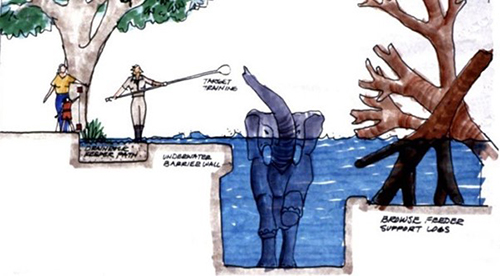
Jon’s Sketch suggesting a method of providing elephants with aquatic aerobic exercise as the basis for the design of the elephant facility at Taronga Zoo. The original intent was for trainers to lead the elephants in swimming multiple 60m long laps. However, when young elephants arrived, they actively played in their “river”, getting abundant exercise without need for caregiver encouragement, as the video below demonstrates.
The video shows then elephant carer Joe Haddock enticing young elephants to swim by first spraying them with water, which they obviously enjoyed. Then the elephants shared a leisurely group mud wallow before entering their “river”. Since the river is 3m deep, the elephants must either swim, walk on the bottom breathing through elevated trunks or stand on each other, as you will see during their aquatic wrestling match.
- Elephant Exhibit, Taronga Zoo, Sydney, Australia, CLR
Hippo Adventure

The Bali Safari tram drives through shallow water of a simulated flooded road and even splashes through the hippos’ pool.
- Tram Ride, Bali Safari and Marine Park, Bali, 2006 JCD
